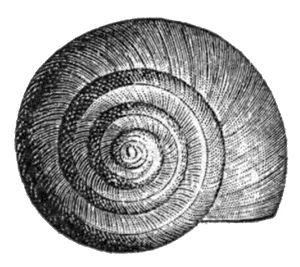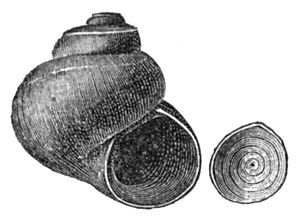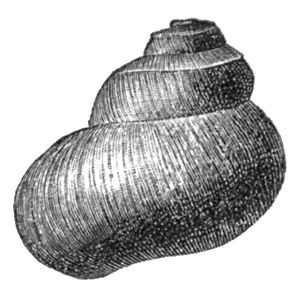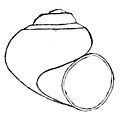Utah roundmouth snail facts for kids
Quick facts for kids Utah roundmouth snail |
|
|---|---|
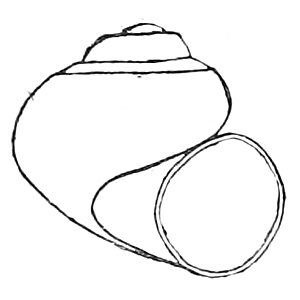 |
|
| Drawing of apertural view of the shell of Valvata utahensis | |
| Conservation status | |
| Scientific classification | |
| Kingdom: | |
| Phylum: | |
| Class: | |
| (unranked): |
clade Heterobranchia
informal group Lower Heterobranchia |
| Superfamily: |
Valvatoidea
|
| Family: |
Valvatidae
|
| Genus: |
Valvata
|
| Species: |
V. utahensis
|
| Binomial name | |
| Valvata utahensis (Call, 1884)
|
|
| Synonyms | |
|
Valvata sincera var. utahensis Call, 1884 |
|
The Utah roundmouth snail, also known as the Utah valvata or desert valvata, is a type of freshwater snail. Its scientific name is Valvata utahensis. This snail has a gill and a special lid called an operculum. It is an aquatic gastropod (a type of snail) and belongs to the family Valvatidae, which are known as valve snails.
This snail species is found only in the United States. The name "Utah" in its common name comes from the state of Utah, where it was first discovered.
Contents
What is the Utah Roundmouth Snail?
How was the Utah Roundmouth Snail named?
This snail was first described in 1884 by Richard Ellsworth Call. He called it Valvata sincera var. utahensis. The first specimens were found in Utah Lake, Utah.
Later, in 1886, R. E. Call decided that Valvata utahensis was a unique species on its own. This was confirmed again in 1902 by Bryant Walker.
A subspecies called Valvata utahensis horatii was named in 1951 from very old fossils. However, scientists later decided it was the same as Valvata utahensis.
What does the Utah Roundmouth Snail look like?
Shell features of the Utah Valvata Snail
The shell of the Utah valvata snail is usually about 4.5 mm tall and 4.5 mm wide. The average size for an adult snail is about 4.32 mm.
The shell looks like a spinning top (turbinate shape). It is thin, you can see through it a bit, and it looks shiny. The top part of the shell is yellowish, and the bottom part is white or greenish-white.
The shell has four whorls (spirals) that get bigger evenly. They have tiny lines on them. The top whorl has a clear ridge, or "keel," which fades away on the main body whorl. This shape and the small ridge help tell Valvata utahensis apart from a similar snail, Valvata humeralis.
The top point of the shell, called the spire, is slightly raised. The very tip, the apex, is a bit sunken. The lines between the whorls, called the suture, are easy to see.
The opening of the shell, called the aperture, is round. Its edge is simple and almost forms a complete circle. It touches the main body whorl.
The umbilicus (a small hole at the center of the shell's base) is small and round. It has a clear angle around its edge.
The snail's operculum (the lid that closes the shell) is light brown. It is made of a tough material and spirals like the shell. It is shaped to fit the shell's opening.
Where does the Utah Roundmouth Snail live?
Ancient homes of the Utah Valvata Snail
Scientists believe that the ancestors of the Utah valvata snail lived across the western United States and Canada. This was as far back as the Jurassic Period, which was about 145 to 200 million years ago.
Fossils of this snail have been found from Utah all the way to California. In the past, Valvata utahensis lived in Utah Lake and the Snake River in southern Idaho. It was also found in the Pliocene era in the Lake Idaho region.
Where can we find the Utah Roundmouth Snail today?

The modern range of the snail used to go as far downstream as Grandview on the Snake River. However, recent checks in Utah found no living snails. This means the species is likely gone from Utah.
Today, this snail lives in a few springs and parts of the Snake River in the Hagerman Valley in Idaho. You can also find them near the Minidoka Dam and the American Falls Dam, downstream to Burley.
Surveys at "Thousand Springs Preserve" showed that the number of Utah valvata snails decreased over four years. In 1991, only two groups of these snails were left there. Each group had about 6,000 snails or fewer.
What is the Utah Roundmouth Snail's daily life like?
What kind of habitat does the Utah Valvata Snail prefer?
The Utah valvata snail lives in many different water environments. These include cold-water springs, spring creeks, and smaller rivers. They also live in the main Snake River and its connected streams, and even in reservoirs (man-made lakes).
It was once thought that these snails only lived in places with lots of oxygen. They were believed to prefer limestone, mud, or sandy-mud bottoms, especially where there were underwater plants. They were thought to avoid areas with only gravel or boulders.
However, recent studies show that these snails can live on many types of surfaces. This includes fine mud and coarser rocks, both with and without large water plants. They have been found at different depths, from less than 1 meter to about 5.5 meters (18.37 feet). They can also live in water temperatures up to 17.2 °C (63 °F).
Scientists also learned that the Utah valvata snail can live in reservoirs. This was previously thought to be an unsuitable place for them.
How does the Utah Roundmouth Snail find food?
Valvata utahensis mainly eats detritus, which is decaying plant and animal matter. They graze along the muddy bottom, eating diatoms (tiny algae) or small pieces of plants. If there are rocks on the mud, they also eat diatoms and other periphyton (tiny organisms attached to surfaces) and water plants.
Life cycle and reproduction of the Utah Valvata Snail
The Utah roundmouth snail is a hermaphrodite. This means each snail has both male and female reproductive parts.
These snails usually live for about one year and produce one group of eggs per year. They lay eggs and reproduce at different times between March and October, depending on their habitat. Most young snails are born between August and October.
New snails hatch about two weeks after the eggs are laid. The Utah valvata snail lays egg masses that contain 3 to 12 developing snails. These egg masses are about 1.0 to 1.5 mm wide. When young snails hatch, they are about 0.7 mm in size.
Who are the Utah Roundmouth Snail's neighbors?
Scientists have not yet studied if trematode parasites affect the Utah valvata snail. Also, no specific predators of this snail have been officially recorded. However, it is likely that some native and non-native animals eat them.
Protecting the Utah Roundmouth Snail
Why was the Utah Valvata Snail once endangered?
This snail was listed as an endangered species by the United States Fish and Wildlife Service on December 14, 1992. This meant it was at high risk of disappearing forever.
However, in 2009, the Fish and Wildlife Service suggested removing it from the endangered list. They found that the snail could live in more places than they first thought. It was not just limited to cold springs. It could also live in spring creeks, tributaries, the main Snake River, and even reservoirs affected by dams. The snail was officially removed from the endangered list in 2010.
Today, Valvata utahensis is listed as a Vulnerable species on the 2011 IUCN Red List of Threatened Species. This means it is still at risk, but not as critically as before.
This article includes information from public domain sources, including a public domain work of the United States Government.
Images for kids
See also
 In Spanish: Valvata utahensis para niños
In Spanish: Valvata utahensis para niños



